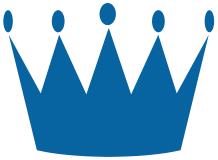Written by Jakob Werdelin and Drew Howard, The Beginner’s Guide to Cooperative Learning: Make your learners your main teaching resource offers step-by-step guidance on how to get simple, powerful Cooperative Learning up and running in your setting – both as classroom practice and as a wider approach to empowering the entire school community.
The Education Endowment Foundation’s Teaching and Learning Toolkit describes collaborative learning as an approach which ‘involves pupils working together on activities or learning tasks’ and in such a way that enables ‘everyone to participate on a collective task that has been clearly assigned’. In the context of this book, Cooperative Learning relates to a number of such activities – from simple memorising to more complex analysis and debating – which are designed to boost learners’ interdependence, participation and interaction.
Drawing upon both research-informed theory and real-world examples, Jakob Werdelin and Drew Howard present both an insightful introduction to Cooperative Learning as a practice and philosophy and a practical guide to classroom application.
The authors share their expertise on how to amplify the effect of current pedagogical approaches and schemes of work, simplify performance management as an empowering tool for teachers and leaders, and create an inclusive environment in which every pupil is able to fulfil their learning potential. Jakob and Drew also discuss how Cooperative Learning relates to a range of other aspects of teaching, including assessment, metacognition and Rosenshine’s Principles.
The book focuses on Catch1Partner as an exemplary Cooperative Learning Interaction Pattern (CLIP) – as, by fully grasping the principles of staging and running Catch1Partner in its many forms, readers will then be better equipped with the foundational know-how to deploy other CLIPs, such as Sage and Scribe, Word-Round and Rotating Role Reading. The authors also provide a variety of ready-to-photocopy (and downloadable) sample teaching materials, tools, guidelines and an activity transcript in the appendices.
Suitable for teachers and leaders in both primary and secondary school settings.
